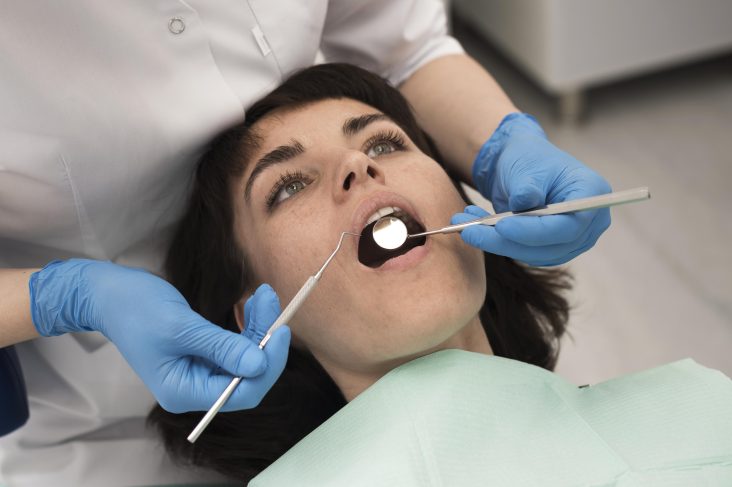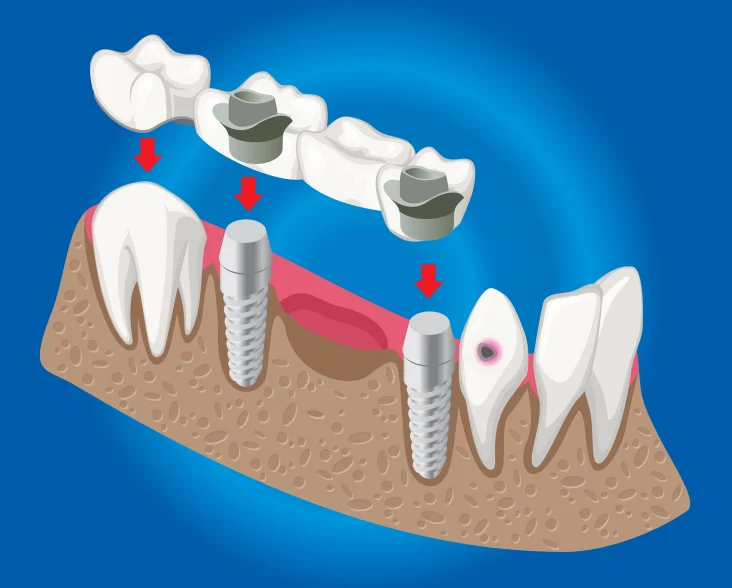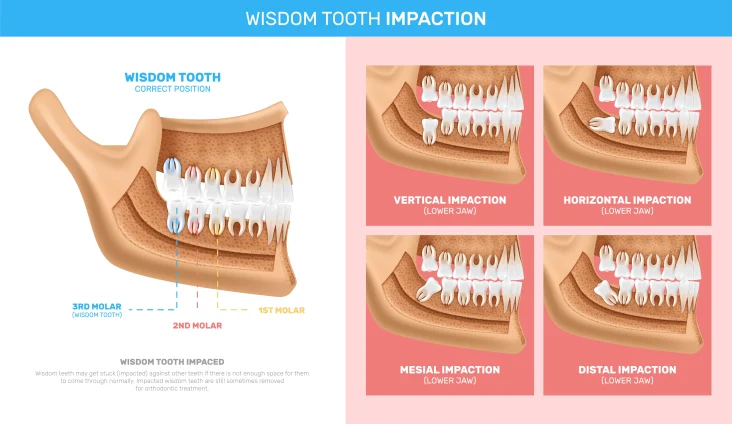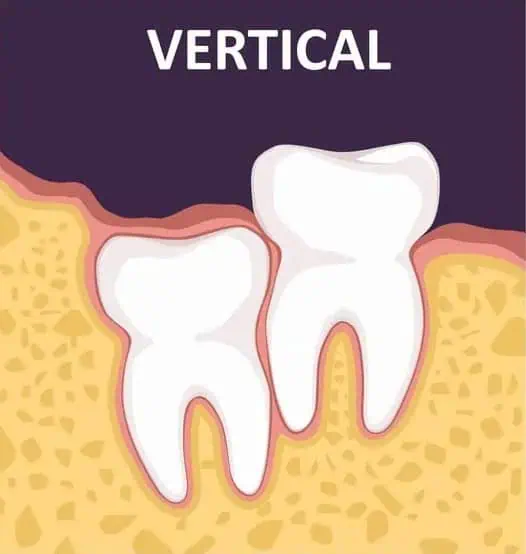Periodontitis is a serious gum disease characterized by severe inflammation of the gums, which can cause redness, bleeding, and swelling. In the U.S., it affects over 47% of adults aged 30 and older, and this figure increases to about 70% among adults aged 65 and above. If not treated, periodontitis can result in tooth loss. In this blog, we will discuss in depth what is periodontal disease, what are the causes, and the 4 stages of periodontal disease.
What is a Periodontal Disease?
A periodontal disease is a type of gum disease that comes in several different stages. It is typically an infection of the tissues that hold your teeth in place, causing severe inflammation in the gums along with swelling, bleeding, or redness. While in its early stages, periodontal disease can make your gums swell and bleed easily. Once it reaches severe stages, you may suffer from receeding gums, which means your gums can pull away from the tooth, bone can be lost, and the teeth may loosen or fall out. So, what are the main causes that could lead to severe stages of periodontal disease? There can be several reasons why you may develop a periodontal disease, including:
- Improper oral hygiene, causing dental plaque and tartar buildup
- Genetic predisposition
- Smoking
- Certain medical condition
Why Does Early Detection Matter in a Periodontal Disease?
Early detection of stages of periodontal disease is essential to prevent severity in the case, further leading to serious damage to your teeth and gums. Here are some reasons why early detection of periodontal disease is necessary:
Prevention of Disease Progression
Early stages of periodontal disease, such as gingivitis, are often reversible with proper treatment. If left untreated, gingivitis can progress to periodontitis, which can cause irreversible damage to the supporting structures of the teeth, including the bone.
Avoidance of Tooth Loss
Advanced periodontal disease can lead to the destruction of the bone and connective tissue that hold teeth in place, potentially resulting in tooth loss. Early detection and treatment can help maintain the integrity of these structures and prevent tooth loss.
Less Invasive and Cost-Effective Treatment
Treating periodontal disease in its early stages is typically less invasive and less costly than treating advanced disease. Early treatment often involves simple procedures such as professional cleanings and improved oral hygiene, whereas advanced disease may require more complex and expensive interventions like deep cleaning (scaling and root planing), surgery, or even tooth replacement.
Better Cosmetic Outcomes
Periodontal disease can cause gums to recede and teeth to appear longer or more spaced out. Early intervention can help maintain the natural appearance of the gums and teeth.
Early Signs of Other Health Issues
Sometimes, periodontal disease can be an indicator of other underlying health problems. Detecting periodontal disease early can prompt further investigation and management of these potential issues.
What are the Stages of Periodontal Disease?
There are 4 stages of periodontal disease, which we will be discussing in detail today. Let’s explore:
-
Gingivitis
Gingivitis acts as an early warning signal for your gums. If left untreated, it can progress to periodontitis, escalating the severity of gum problems. The accumulation of bacterial plaque on your teeth’s surfaces can cause irritation, making your gums more susceptible.
-
Early Periodontitis
In the second phase, gum inflammation progresses beyond the surface and gradually infiltrates the supporting bone, beginning to damage the jaw. Although this change may not be immediately noticeable, your gums are starting to pull away from your teeth, forming pockets that harbor more plaque and bacteria. The symptoms resemble those of gingivitis but are more severe. You may observe increased bleeding, persistent bad breath, and potentially experience discomfort and pain. Taking action at this point is crucial. In addition to maintaining good dental hygiene, regular dentist visits to assess the damage are necessary. Deep cleaning procedures like scaling and root planing become a necessity at this stage. This dental cleaning will address plaque and tartar buildup beneath the gumline, helping to slow the progression of the disease.
-
Moderate Periodontitis
This phase represents a significant advancement of gum disease. The initial mild inflammation and infection have now intensified, leading to evident damage to the bone that supports your teeth. In moderate periodontitis, bone loss becomes more significant, resulting in deeper pockets between your gums and teeth. As mentioned earlier, these pockets harbor bacteria. Unfortunately, deeper pockets mean more bacteria. Your teeth may start to feel slightly loose, and in some instances, they might shift slightly as the bone structure deteriorates. The symptoms are more noticeable than in the earlier stage. You may observe gum recession, persistent bad breath, and possible pus formation around the affected area. At this point, in addition to scaling and root planing, we might consider localized antibiotic treatments or more advanced periodontal procedures.
-
Advanced Periodontitis
In severe periodontitis, irreversible damage occurs. The gaps between your gums and teeth become larger, leading to increased bone loss. This can have major implications. Your teeth might start to feel loose, affecting your bite and possibly causing discomfort. Gum recession worsens, often resulting in tooth sensitivity. The deeper pockets filled with bacteria can cause chronic inflammation and potential abscesses. Advanced periodontitis is a serious condition that requires a comprehensive approach. Without treatment, tooth loss is likely. Immediate and decisive action is necessary to stop further deterioration. Your dentist’s responsibilities increase, and they might suggest advanced treatments like gum grafts to combat receding gums or even surgical procedures to clean out deeper pockets. These measures are taken to protect your jawbone and prevent permanent damage.
Take Care of Your Gums to Prevent Periodontal Disease
When talking about oral hygiene and dental care, most people tend to focus only on teeth, leaving the gums aside. This should not be the case because the secret to healthy teeth is healthy gums. They are the barrier that protects bone and sensitive roots of the teeth, ensuring they fit right around your teeth to protect them against bacteria buildup. It’s essential to follow proper oral hygiene and a balanced diet to maintain the health of your gums and prevent any stages of periodontal disease.
CALL CORAL DENTAL CARE AT 978-607-0110
















